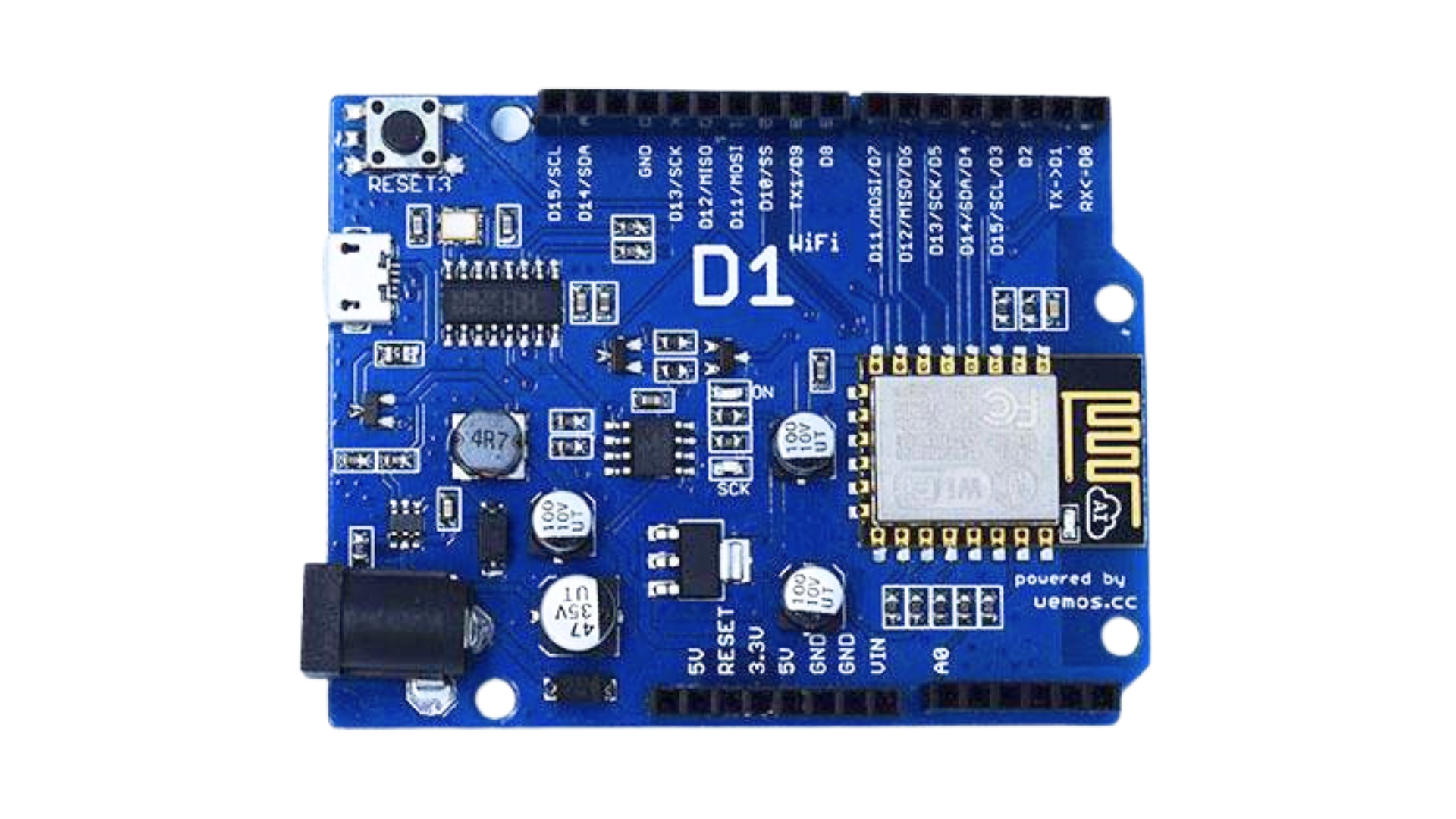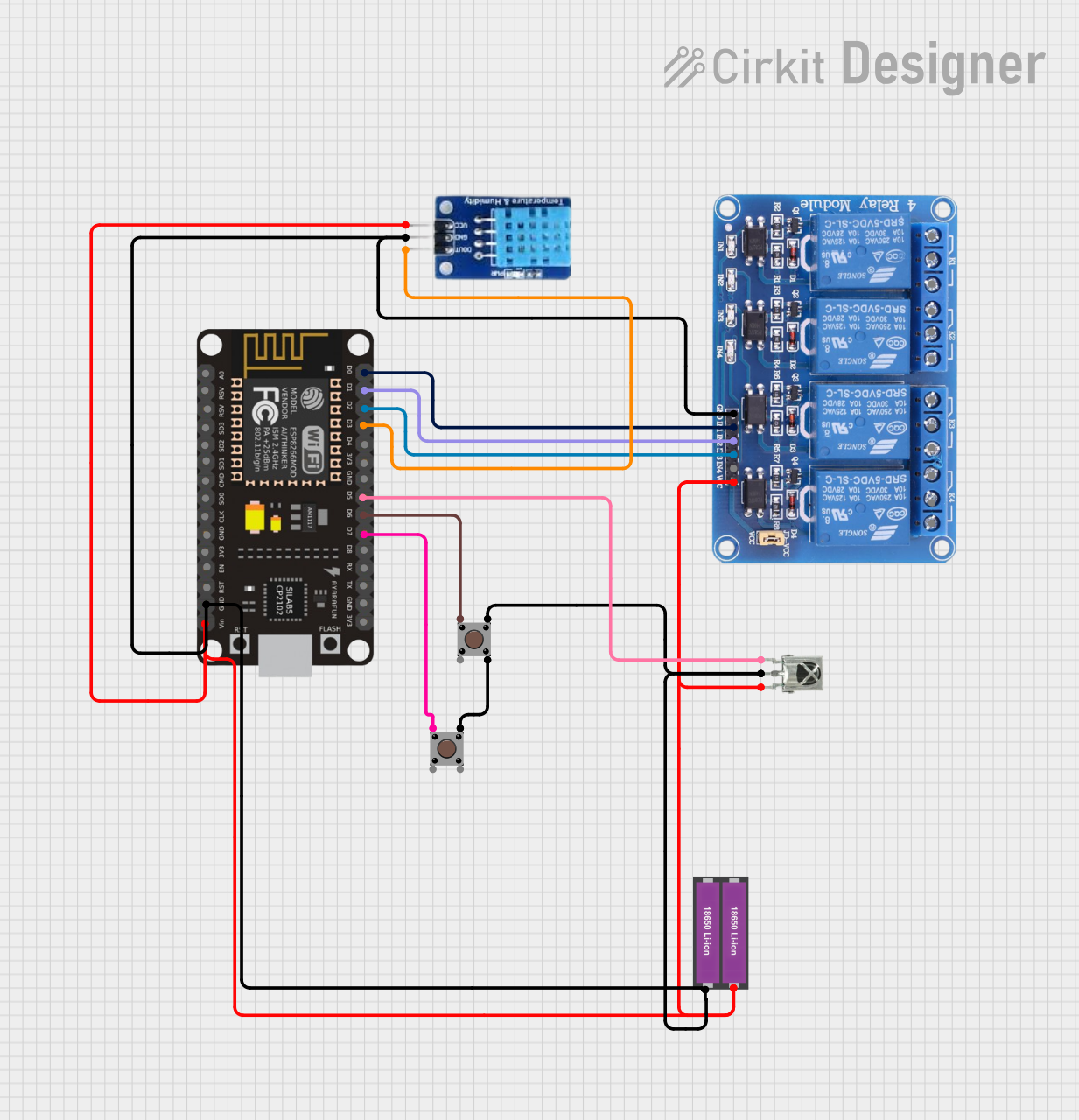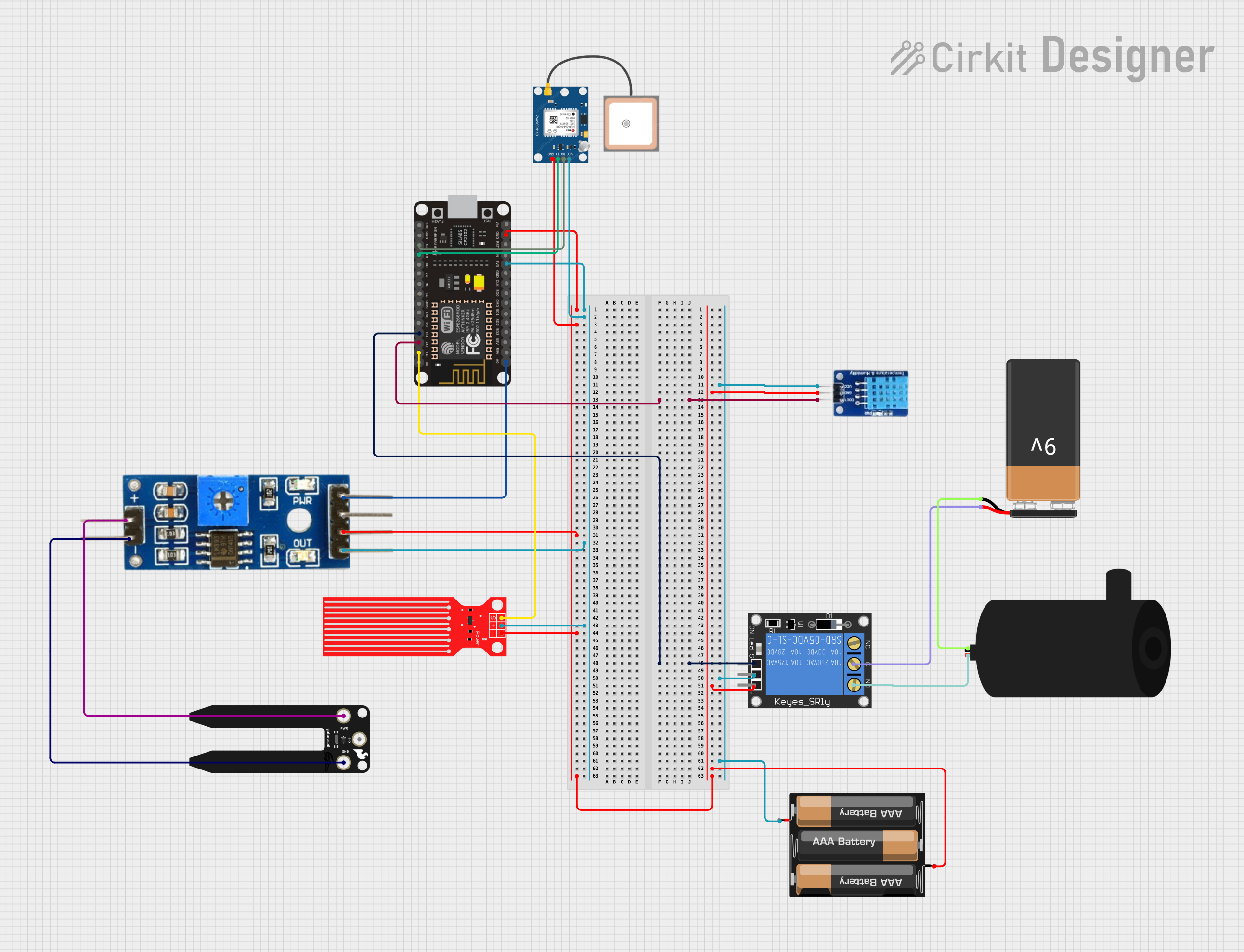
How to Use WeMOS ESP8266: Examples, Pinouts, and Specs

 Design with WeMOS ESP8266 in Cirkit Designer
Design with WeMOS ESP8266 in Cirkit DesignerIntroduction
The WeMOS ESP8266 development board is a versatile and cost-effective platform based on the ESP8266 WiFi module. It is widely used for building Internet of Things (IoT) projects due to its ability to easily connect to WiFi networks and its support for various programming environments, including the Arduino IDE. Common applications include home automation, sensor networks, and DIY electronics projects.
Explore Projects Built with WeMOS ESP8266

 Open Project in Cirkit Designer
Open Project in Cirkit Designer
 Open Project in Cirkit Designer
Open Project in Cirkit Designer
 Open Project in Cirkit Designer
Open Project in Cirkit Designer
 Open Project in Cirkit Designer
Open Project in Cirkit DesignerExplore Projects Built with WeMOS ESP8266

 Open Project in Cirkit Designer
Open Project in Cirkit Designer
 Open Project in Cirkit Designer
Open Project in Cirkit Designer
 Open Project in Cirkit Designer
Open Project in Cirkit Designer
 Open Project in Cirkit Designer
Open Project in Cirkit DesignerTechnical Specifications
Key Technical Details
- Microcontroller: ESP8266
- Operating Voltage: 3.3V
- Digital I/O Pins: 11, all pins have interrupt/pwm/I2C/one-wire supported (except D0)
- Analog Input Pins: 1 (Max input: 3.2V)
- Clock Speed: 80MHz/160MHz
- Flash Memory: 4MB
- WiFi Protocol: 802.11 b/g/n
- WiFi Range: 50-100m
Pin Configuration and Descriptions
| Pin | Function | Description |
|---|---|---|
| TX | TXD | Serial transmission |
| RX | RXD | Serial reception |
| A0 | ADC | Analog input, max 3.2V input |
| D0-D8 | GPIO | General Purpose Input/Output |
| G | GND | Ground |
| 5V | VCC | 5V power input |
| 3V3 | 3.3V | 3.3V power input |
| RST | RESET | Reset pin |
Usage Instructions
Connecting to a Circuit
Powering the Board: The WeMOS ESP8266 can be powered via USB or through the 5V and GND pins. Ensure that the power supply is stable and within the recommended voltage range.
Programming: The board can be programmed using the Arduino IDE. Before programming, select the correct board (WeMOS D1 R2 & mini) and port from the Tools menu.
Connecting to WiFi: Use the ESP8266WiFi library included with the Arduino IDE to connect to WiFi networks.
GPIO Pins: The digital pins can be used as input or output. Use
pinMode(),digitalWrite(), anddigitalRead()functions in your code to control them.
Best Practices
- Always use a 3.3V regulator when connecting sensors or components to the 3V3 pin to prevent damage to the board.
- Avoid exposing the board to moisture or extreme temperatures.
- When using WiFi, place the board in a location with a strong signal to ensure a stable connection.
Example Code: Connecting to WiFi
#include <ESP8266WiFi.h>
// Replace with your network credentials
const char* ssid = "your_SSID";
const char* password = "your_PASSWORD";
void setup() {
Serial.begin(115200); // Start serial communication at 115200 baud
WiFi.begin(ssid, password); // Connect to WiFi network
while (WiFi.status() != WL_CONNECTED) { // Wait for the connection to establish
delay(500);
Serial.print(".");
}
Serial.println("");
Serial.println("WiFi connected");
Serial.println("IP address: ");
Serial.println(WiFi.localIP()); // Print the local IP address
}
void loop() {
// Your code here
}
Troubleshooting and FAQs
Common Issues
- Cannot Connect to WiFi: Ensure the SSID and password are correct. Check the signal strength and the board's proximity to the router.
- Board Not Recognized by Computer: Check the USB cable and port. Ensure the correct drivers are installed.
- Unexpected Behavior in Circuit: Verify all connections. Ensure power supply is stable and within the recommended range.
Solutions and Tips
- Reset the Board: If the board is unresponsive, press the RST button to reset it.
- Firmware Update: Periodically update the firmware to the latest version for improved performance and stability.
- Serial Monitor: Use the Serial Monitor in the Arduino IDE to debug and monitor the board's output.
FAQs
Q: Can I power the WeMOS ESP8266 with a battery? A: Yes, you can power it with a battery, but ensure the voltage is regulated to 3.3V or 5V.
Q: How many digital pins can be used for PWM? A: All digital pins except D0 support PWM.
Q: What is the maximum current the GPIO pins can handle? A: Each GPIO pin can handle up to 12mA of current.
Q: Can I use the WeMOS ESP8266 as a WiFi repeater? A: Yes, with the appropriate firmware, the ESP8266 can function as a WiFi repeater.
For further assistance, consult the WeMOS ESP8266 community forums and the extensive online resources available for this versatile development board.